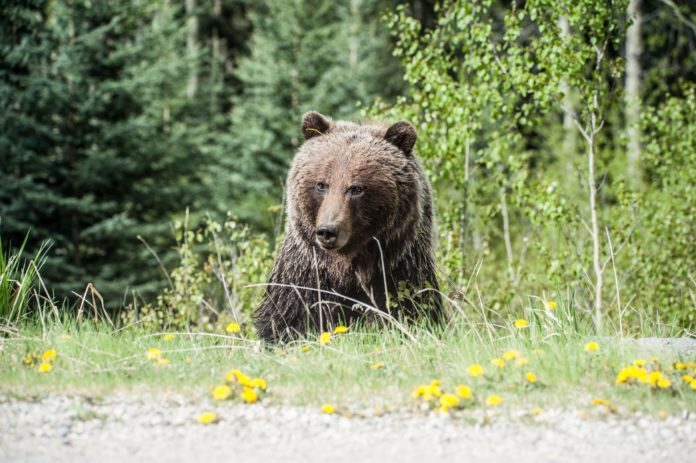Hikers across Canada and the US who have spent time in bear territories are likely familiar with bear spray, bear-safe food storage lockers, and guidelines for encountering bears in the wild. Although bears don’t typically seek out hikers, encounters do occur — and thanks to a recent study, we now know that a shared preference for gentle, leisurely trails may be to blame.
The study was published in the Journal of Experimental Biology and included contributions from the Foothills Research Institute in Alberta.
Grizzly bears are found across Canada and the US, and they are known for being extraordinarily fast. In fact, hikers who encounter grizzly bears in the wild are warned to stay still, simply because humans stand no chance of outrunning these bears.
Yet while grizzly bears have the ability to reach speeds of more than 50 km/h, they typically don’t travel so quickly. Grizzly bears spend the winter months in a mild form of hibernation called torpor, which means they need to stock up on energy while they’re still awake during the summer.
To learn more about how grizzly bears spend their energy prior to torpor, a team of scientists trained captive grizzly bears to walk on treadmills at varying speeds and inclinations.
By monitoring the bears’ oxygen consumption levels as they walked, the team found the walking conditions that minimize the energy needed to travel. Walking at a speed of roughly 4 km/h on a 10 percent incline minimized the bears’ energy cost per unit distance. In other words, walking slowly on relatively flat ground helps them burn fewer calories so they can save energy for winter.
The team then compared these findings with data gathered from GPS-tagged bears in Yellowstone National Park. Interestingly, they found that these bears weren’t walking at the most energy-efficient speeds, but instead chose a leisurely pace of 2 km/h, which is about the same speed as a slow hiker.
The wild bears also tended to stay on flat trails with no more than a 10 percent incline. According to the authors, this may have to do with grizzly bears’ foraging patterns. Bears typically feed on berries as they walk, and a slower speed could make it easier to spot food sources.
“As [the bears are] moving, they’re searching the environment, seeing what food they can find,” explained Gordon Stenhouse, a researcher at the Foothills Research Institute and co-author of the study, in an interview with CBC.
“Basically, they’re feeding as they walk.”
National park trails are designed with hikers in mind, and so they often feature stretches of shallow inclines that make for an easier walk. These same trails are great for helping grizzly bears get around the park while saving energy, which could explain why hikers encounter bears in the wild.
“These basic tenets of how both grizzly bears and people sense and respond to the energy landscape may increase the chance that people will encounter grizzly bears when hiking,” the authors explained.
While seeing grizzly bears in the wild can be frightening, the authors suggest that outdoor education programs could help reduce conflict when these encounters occur. Understanding that the encounter is caused by a shared preference for leisurely hiking can reduce hikers’ fears, making the encounter safer for both bears and humans alike.








































